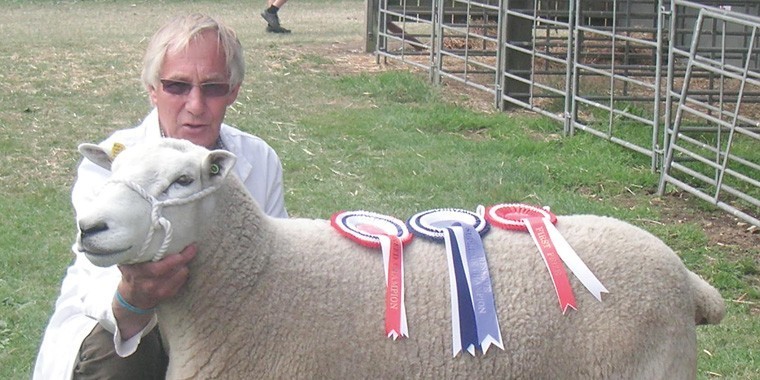I have recently, with some of my students, been using the excellent work carried out by the department of veterinary medicine at Cambridge on using facial expressions as an indicator of pain in sheep.
It is a very useful if obvious piece of work to anybody that really knows and understands sheep. But what it does is formalise what many of us do all the time often unconsciously. A good stock person can look at an animal, be it sheep, cow or whatever and spot that something is not quite right. If pressed they will often find it difficult to explain just why, but they know that something is amiss and that further investigation is needed.
What the work does is look at five different facial features on sheep (eyes, cheeks, ears, lips and jaw and the nose) for indicators of tension – on a three point scale for each – as a measure of pain. So a nice relaxed face would indicate that everything is OK and a screwed up face (eyes partially closed, ears back, tight cheeks, nose screwed up and tight lips and jaw indicates a significant level of pain). As I said obvious, but maybe not too obvious: we use these indicators all of the time along with other signals (behaviour etc) to assess the state of health and wellbeing of our sheep, often without knowing that we are doing it.
The main reason for using this was to reinforce with students how important spending time looking at your stock and good observation are when keeping sheep. Certainly at this time of the year our eyes are probably the most important tool that we have in our arsenal and the closer we come to lambing the more essential they become. Good observation is particularly crucial with problems such as twin lamb diseases and hypocalcaemia, which if spotted early can be relatively easy to deal with but if allowed to progress may present major problems or potentially a dead ewe.
Those powers of scrutiny become even more important once lambing begins. Good observation and the ability to spot problems early will undoubtedly save lambs’ lives. Sheep (historically) are a prey species and as such it is not in their best interest to overtly demonstrate any signs of weakness for fear of being identified by a predator as a potentially soft target. A good example of this is in young lambs when it is often convenient for us to blame a fox (or other predator) for taking a lamb. Somehow it ceases to be our fault, but I suspect that many of those lamb deaths that are recorded as misadventure.
and/or predation are deaths that have their true cause elsewhere (e.g. disease, hypothermia etc), with predators simply taking advantage of the situation.
Sadly as far as most sheep are concerned both us and our dogs, as species with binocular vision, come under the classification of predator. When faced with a predator of any type, a sheep will revert its most basic survival instincts and will do whatever it can to mask any weakness that may attract unwelcome attention. It is not unusual to spot a lame ewe when you are leaning on a gate watching your sheep only to lose her once you approach the flock as she tries to hide her limp. Once they have been gathered or penned it may only be those tell tale facial expressions that give her away.
Another benefit arising from using the facial expressions work with students, is to encourage them to regard sheep as individuals, something that we often tend to forget. I probably have an advantage in being involved on a reasonably regular basis, particularly at this time of the year, with the day to day operation of a college flock of 500 commercial crossbred ewes and with my own small flock of pedigree Lleyns.
I enjoy them both, but more so my own for a number of reasons. Obviously part of that is because they are mine (or should I say ours: my wife is an important part of the operation), and we are responsible for their wellbeing and how they perform, through both good and not so good times. But a significant part of that additional pleasure comes from knowing them as individuals, without being anthropomorphic: they are after all animals, not little people.
This does not mean that they get a lot of individual attention, apart from the select few at show times. In general they are managed as a flock, but simply knowing each sheep and their different characters and quirks adds considerably to the satisfaction derived. I know that in a large flock it is difficult to recognise all the individual characters: as in life, in general it tends to be the good and the bad that are memorable, with those in between often tending to blend into the background. But we should try to remember that any flock, no matter how large or how small, is made up of individuals. They all from time to time deserve a little bit of individual recognition and attention, and this is often the time of year for them to achieve that goal.




